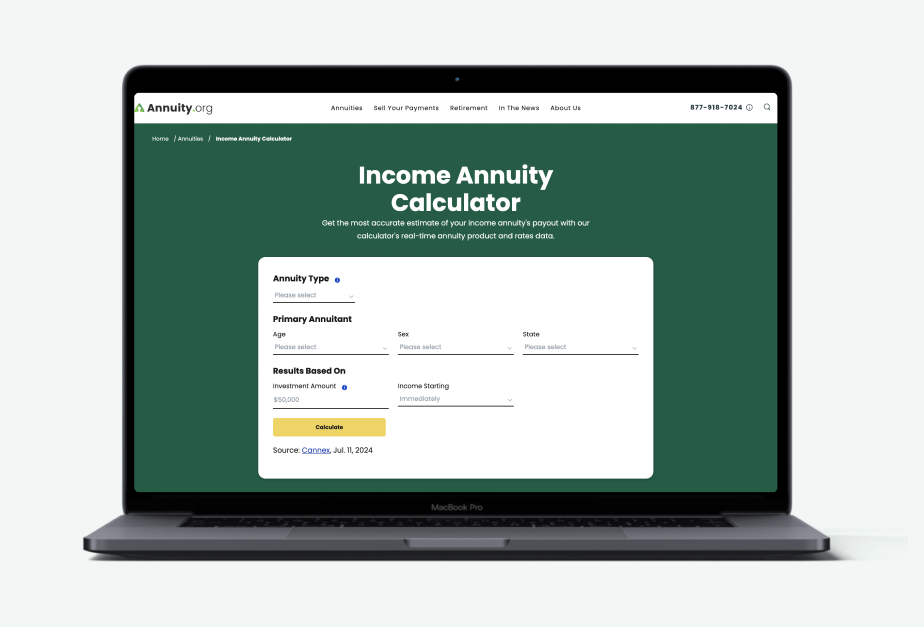Are All Annuities Regulated?
All annuities are regulated at the state level by each state’s insurance commissioner. Any insurance company that issues annuities must be licensed in every state in which it does business. In addition to licensing, state insurance commissioners monitor the finances of insurance companies while ensuring they follow requirements designed to prevent negligent practices.
In addition to statewide regulation, variable annuities and registered indexed-linked annuities (RILAs) are also regulated at the federal level by the U.S. Securities and Exchange Commission (SEC) and the Financial Industry Regulatory Authority (FINRA).
Anyone selling variable annuities must also carry a securities license.
Annuity Regulation Rules by Type
| Annuity Type | State Level Regulated | SEC Regulated | FINRA Regulated |
| Fixed Annuities | ❌ | ❌ | |
| Fixed Index Annuities | ❌ | ❌ | |
| Registered Index-Linked Annuities | |||
| Variable Annuities |
If you’re considering buying an annuity, having a general knowledge of how annuities are regulated can help you avoid financial trouble.
Use this information to research your annuity provider and the person selling or recommending it. Many of the regulating bodies have tools you can use to check the background of companies and brokers.
For example, you can access FINRA’s online Broker Checker tool to investigate the background of any broker or brokerage firm. The site tells you whether a broker or firm is registered, discloses any actions taken by regulators and gives you information about the broker’s employment history, licensing and complaint record. If you yourself have a bad experience, you can also file your own complaint.
Annuities come in many forms. They don’t all work the same way, aren’t all regulated the same way and don’t even fall under the regulation of the same entities.
However, taking the time to understand the basics of regulation and how they vary by annuity can help you make a more informed decision before you sign a contract.
Federal Regulation of Variable Annuities
Variable annuities are considered securities and are therefore federally regulated by the SEC and FINRA.
FINRA establishes standards for professionals who sell variable annuities. The representative “must make reasonable efforts to determine the customer’s age, annual income, investment experience, investment objectives, investment time horizon, existing assets and risk tolerance” before recommending the product, according to FINRA rules. The representative must also have a reasonable basis for believing that the consumer would benefit from the annuity.
Sales of variable annuities are a leading source of investor complaints to FINRA. The authority attributes the volume of complaints to their complexity and the confusion surrounding them, which can lead to what regulators deem “questionable sales practices.”
If you have a complaint about sales practices related to variable annuities, report your complaint to your local FINRA District office.
State Regulation of Annuity Sales
Annuities are regulated at the state level by the authorities that oversee life insurance companies. These insurance commissioners also license annuity issuing companies. Through these regulators, consumers can obtain information and file complaints about people and businesses registered to sell annuities through their state’s insurance department.
Before being granted a license to sell annuities, an insurance company must comply with strict requirements regarding capital, surplus and finances. State insurance commissioners also investigate and monitor the experience and character of company management to ensure the company will protect its consumers’ interests.
Most states adopt model laws created by the National Association of Insurance Commissioners (NAIC). These are designed to encourage best practices for insurance companies while promoting uniformity and consistency industry-wide. States are free to adopt them, modify them or reject them.
Annuities come in many forms. They don’t all work the same way and aren’t all regulated the same way or even by the same entities. However, taking the time to understand regulation basics can help you make a more informed decision before you sign a contract.
Updates to Suitability Standard
The NAIC’s Suitability in Annuity Transactions Model Regulation sets basic standards for recommending annuity products to consumers. The regulation, according to the association, is designed to “ensure the insurance needs and financial objectives of consumers are appropriately met at the time of the transaction.”
The NAIC began updating the suitability regulation following the reversal of a federal rule mandating stricter standards for professionals who sell and recommend annuities. This fiduciary rule would have required professionals to put their customers’ interests before their own. This Annuity Suitability Working Group ensures that any recommendations made by agents properly address consumers’ financial goals. As of November 2025, most all states have adopted these model revisions.
Model Law for Disclosure
Another important consideration is the NAIC Annuity Disclosure Model Regulation. This requires the disclosure of certain information about annuity contracts and is designed to protect consumers while promoting public education.
In general, states require annuity contracts and forms to be filed and approved by the insurance commissioner or the Interstate Insurance Product Regulation Commission, to which 48 states, Washington D.C. and Puerto Rico belong.
NAIC Disclosure Standards for Annuities
- Applicant must receive the disclosure document and the Buyer’s Guide.
- If the Buyer’s Guide and disclosure document are not provided at or before the time of application, the applicant will have a free look period lasting at least 15 days to return the annuity contract without penalty. This is in addition to any other free look period required by law.
- The disclosure document must include:
- The insurer’s legal name, physical address, website address and telephone number.
- The generic name of the contract (specifying that it’s an annuity), the company product name and the form number.
- The annuity’s benefits, highlighting its long-term nature and providing any applicable examples.
- An explanation of charges and fees.
- Guaranteed rate or indexed crediting rate formula information, noting that rates are subject to change.
- Insurers must define terms used in the disclosure statement that the public may not understand
In addition to regulating annuities, each state has guaranty associations that insure annuities and other insurance products in the event the issuing insurance company becomes insolvent. Each state’s guaranty associations have their own limits, but the typical statutory coverage limit is $250,000 for annuities.
State Insurance Websites
Before purchasing an annuity, utilize your state’s insurance department to review the record of the insurance company or agent issuing the annuity. You can also file complaints with the commissioners’ office.
Each site is different, but annuity information is generally provided in the life insurance section of each website. To help, the NAIC offers an online directory with links to each state’s insurance website.

Curious How Today’s Annuity Rates Compare?
U.S. Treasury, the IRS and Annuities
The U.S. Treasury Department and Internal Revenue Service are also involved in the operation and regulation of annuities.Over the years, the Treasury and the IRS have issued several rules allowing for both the creation and management of different annuity products.
For example, Qualified Longevity Annuity Contracts (QLACs) were created by Treasury rules established in 2014 to help retirees manage their savings. These QLACs serve as deferred annuities that are funded inside qualified retirement plans.
Another critical federal regulation is outlined in IRS Publication 939, the General Rule for Pensions and Annuities, which explains the taxation of annuities.
Annuity Regulation FAQs
Fixed annuities and fixed index annuities are not federally regulated by the SEC. However, variable annuities and RILAs are considered securities, so they are subject to SEC regulation.
Annuities differ from other financial savings vehicles, such as saving accounts and certificates of deposit (CDs), because they do not share FDIC protection.






